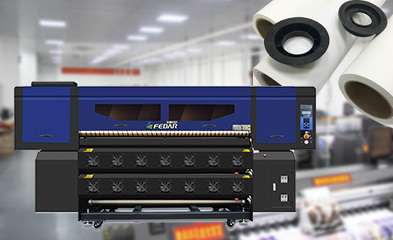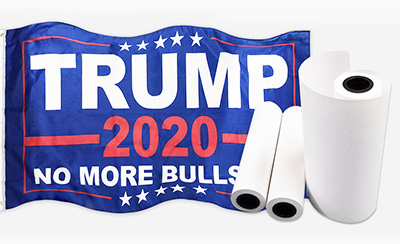HOT SALE
APPLICATION
Phone:+86-15215969856 E-Mail: 396838165@qq.com
In recent years, DTF in printing has emerged as a revolutionary technology in the custom apparel and textile decoration industry. Known for its vibrant colors, versatility across fabric types, and ease of use, Direct to Film (DTF) printing is gaining popularity among hobbyists and professional printers alike. One of the most common concerns among users, however, is understanding how long DTF transfers last and what factors influence their durability. This article explores the entire lifecycle of DTF transfers—from production to care—and how to ensure your prints stand the test of time.
What is DTF in Printing?
The modern printing method Direct to Film (DTF) enables designers to create heat-transfer prints directly onto clothing materials through digital technology. The printing method of DTF operates without needing fabric pre-treatment and works with any fabric material.
The Basic Process of Direct to Film (DTF) Printing
The process starts when a DTF printer and ink create a design on PET film. The printed film receives an adhesive powder application which requires heat treatment for curing. The film receives heat treatment after preparation to achieve permanent fabric design transfer. The DTF printing process requires designers to print their designs onto special films before applying powder adhesive for curing and then using heat to transfer the design onto their chosen material.
Key Components Used in DTF Transfers
The DTF printing process includes multiple elements which work together to produce high-quality prints that last for a long time.
PET Film
The base material for DTF transfers consists of PET (polyethylene terephthalate) film. The product description includes PET film (Single sided) which is a single-sided cold tearing film that measures 60cm * 100M per roll. The films possess high heat tolerance and they separate easily from the press after application.
DTF Inks and Adhesive Powder
The use of premium inks produces both intense color effects and extended product life. Item No.: DTF Ink; Color: BK, CY, MG, YL, WT; Used For: DTF Printer. The adhesive powder functions as a vital component which enables the inked design to stick to fabric surfaces without any signs of cracking or peeling.
Heat Press Equipment
The process needs stable temperature and pressure conditions to achieve successful transfers. The transfer process needs 150°C–165°C temperature and 8–15 seconds of pressing time based on the selected PET film type.
Factors That Influence the Longevity of DTF Transfers
Multiple factors determine the lifespan of custom DTF prints after they are applied to a surface.
Quality of Materials Used in the Printing Process
Premium inks combined with high-resolution printing produce designs that maintain their color intensity while providing extended durability. The use of inferior inks together with films leads to premature color degradation and weak bond strength.
Application Method and Temperature Settings
The improper use of pressing temperature and pressure leads to weak fabric adhesion and damage to both fabric and design elements. Use the manufacturer-recommended settings to achieve the best possible results.
Type of Fabric and Garment Surface
DTF transfers interact differently with various fabric types. The adhesion of DTF transfers works best on smooth cotton fabrics and polyester blends but not on stretchy or textured materials.
Frequency and Method of Washing
The way you maintain your DTF-printed items determines how long they will last. The combination of strong cleaning agents and hot water washing and high-heat tumble drying leads to rapid deterioration of the items.
Comparing DTF Transfers with Other Printing Methods
The evaluation of DTF requires comparison with other well-known printing methods to determine its advantages.
DTF vs. DTG (Direct to Garment)
DTG printing needs pre-treatment before application and performs optimally on cotton materials yet DTF printing works on various fabrics without needing pre-treatment.
DTF vs. Screen Printing
Screen printing works best for large production runs yet fails to deliver precise details when making small print jobs. DTF printing delivers detailed high-definition results for intricate designs at no additional cost for setup.
DTF vs. Sublimation Printing
The sublimation process works only with polyester fabrics and white or light-colored materials. The DTF printing method delivers high-quality results on different materials while providing durability and flexibility for use with dark-colored garments.
Best Practices to Extend the Life of Your DTF Prints
The correct handling of custom prints before and after application leads to longer-lasting results.
Proper Washing and Drying Instructions
The way people wash their prints determines how well they will hold up throughout their lifespan.
Recommended Water Temperature and Detergents
Washing your clothes inside out in cold water will help them last longer. Choose gentle cleaning products that do not contain bleach or strong enzymes because these substances can damage adhesives and inks.
Avoiding Harsh Chemicals and High Heat
Direct ironing and high-temperature tumble drying should be avoided because they can cause prints to crack or peel as time passes.
Storage Tips for Unused Transfers
Store unused PET films flat in cool dry areas that protect them from direct sunlight to preserve their adhesive properties.
Regular Maintenance of Printing Equipment
Regular printer maintenance prevents clogged nozzles which allows ink to flow freely. The printer maintains excellent fluency at 360dpi while printing 20 meters without interruption because regular maintenance extends its operational lifespan.
Common Signs of Wear in DTF Transfers Over Time
The identification of early indicators enables users to determine when they need to reapply or replace their products.
Fading or Color Degradation
The color vibrancy of fabric tends to fade because of repeated hot water washing and sunlight exposure during storage.
Cracking or Peeling on the Fabric
The problems usually develop because of incorrect pressing methods or poor adhesive powder quality during the transfer process.
Loss of Adhesion After Multiple Washes
The adhesive strength of the fabric decreases when edges start to lift after multiple washes even when following the recommended care instructions.
Realistic Expectations for the Lifespan of DTF Transfers
What can you reasonably anticipate from properly created DTF transfers?
Average Durability Based on Industry Standards
The lifespan of DTF prints reaches 50 washes and beyond when you use premium materials and follow proper maintenance procedures.
How Usage Conditions Affect Performance
The combination of regular use with harsh washing methods shortens the product lifespan when compared to using it occasionally with mild cleaning practices.
Introducing Changfa Digital as a Trusted Supplier
Reliable results depend on choosing an experienced supplier such as Changfa Digital when sourcing materials.
Overview of Products Offered by Changfa Digital
Changfa Digital operates as a professional sublimation paper manufacturer which provides digital printing services through their 15+ years of experience and delivers complete solutions from base paper coating to worldwide shipping logistics.
Sublimation Paper and Inks
Our main products include paper weights of 29gsm and 100gsm which we can produce in widths from 61cm to 190cm and more.
Printers and Heat Transfer Machines
The OEM/ODM service of Changfa enables clients to personalize their equipment requirements for business operations. Our team can modify the product to match your required samples and we also provide customization services for your needed products.
Tissue Paper for Transfer Applications
The heat press operation requires Changfa to deliver tissue/protect paper as an essential material. The weight of the paper is 30GSM (White paper) and it comes in four different sizes: 160cm/162cm/180cm/182cm.
Commitment to Quality and Innovation
The company imports one set of German-made advanced coating line for sublimation paper manufacturing every day. The company maintains worldwide product quality through its modern technology investments. The company produces 3000 tons of products each month.
Conclusion
The lifespan of custom prints depends on multiple factors which include material quality and application accuracy and garment type and post-care practices and supplier reliability. The methods described in this guide will help you achieve prints that stay vibrant after multiple washes while keeping their original appearance.
FAQs:
Q1: How many washes can a standard DTF transfer withstand before showing damage?
A: DTF prints made with Changfa Digital’s high-grade materials can withstand 50 or more washes before showing any noticeable decline in quality.
Q2: Can a standard home iron be used for DTF transfer application instead of a heat press?
A: Yes, a standard home iron can be used for DTF transfer application, but only under specific controlled situations. An industrial-grade heat press is recommended as it provides essential temperature distribution for proper adhesion, which regular household irons fail to deliver.
Q3: Do DTF prints work with all fabric types?
A: Yes, DTF prints are compatible with every fabric type available in the market, including cottons, polyesters, their blends, and dark-colored materials where sublimation printing is ineffective. The ability to produce detailed prints on multiple fabric types makes DTF printing highly flexible.
















